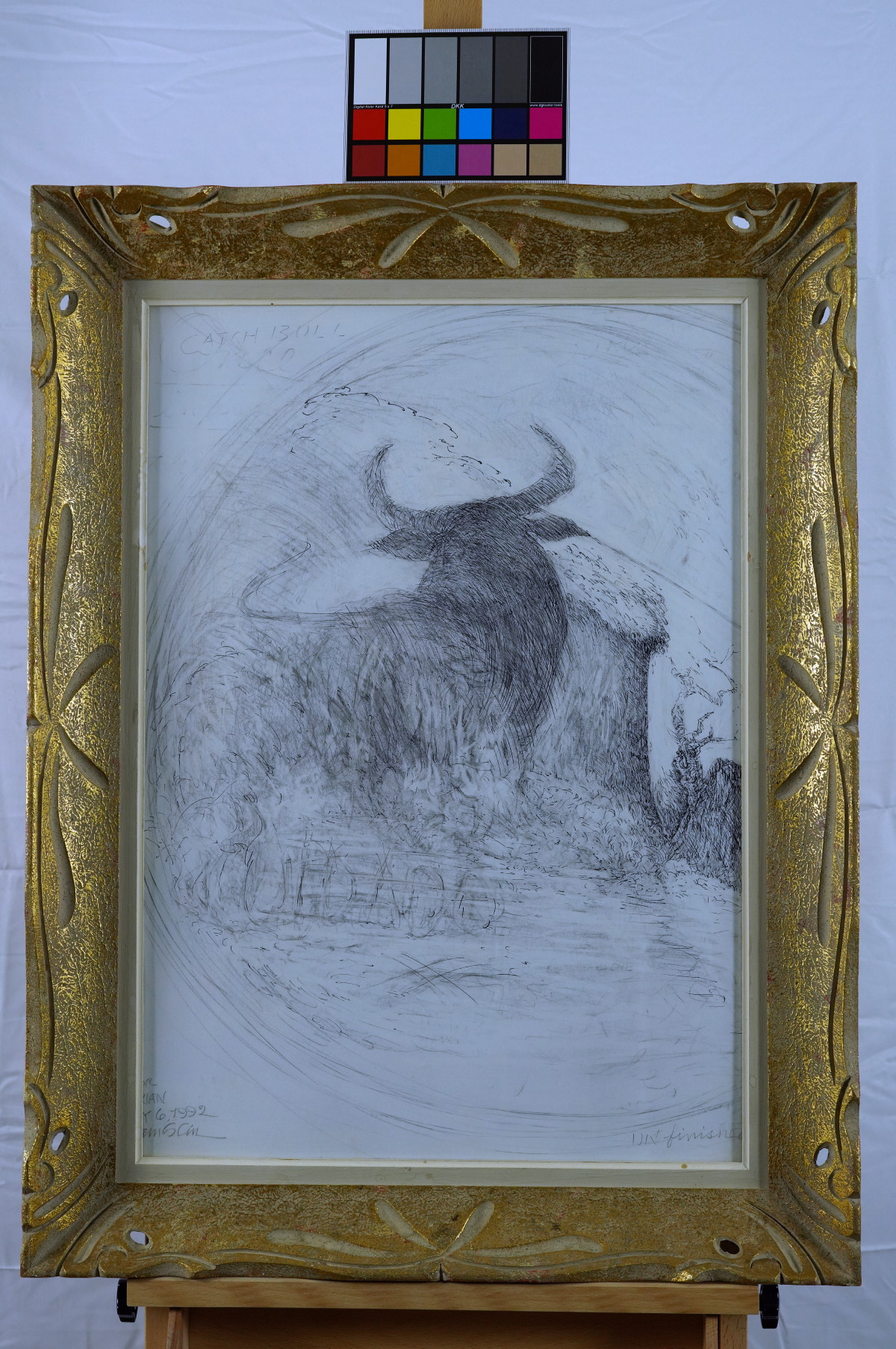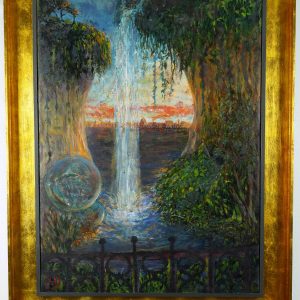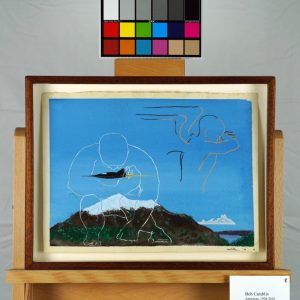Description
catch bull, 1992
Pen and ink
Signed
27 x 19 in. (image)
33.5 x 25.25 in. (frame)
original, includes certificate of authenticity from ArtTrust
The sketch “Catch Bull” depicts a large bull, drawn in sweeping, loose strokes that give a sense of movement and energy. The bull dominates the scene, with its powerful horns curving upwards. There is a swirling, almost vortex-like background around the bull, suggesting chaos or a sense of turbulence. The image includes a faint impression of text at the bottom, which appears to say “Catch Bull,” indicating a potential reference to traditional bull symbolism or a specific story.
In Zen Buddhism, bulls often symbolize the mind or self, and taming or catching the bull represents the process of taming the mind and achieving enlightenment. This sketch can be seen as illustrating the early stages of this journey, where the bull (representing the wild, untamed mind) is still powerful and hard to control. The swirling background reinforces the idea of a chaotic, uncontrolled state that one must navigate through to reach calmness and understanding.
According to the I Ching, the bull may correspond with Hexagram 34 (Great Power), which emphasizes the potential for overcoming challenges through inner strength and the correct application of force. In this image, the bull’s power is evident, but its unrefined energy suggests that this potential must be harnessed carefully to avoid misdirection. The scene reflects a moment where guidance and control can transform raw strength into productive action.
Combining Zen and I Ching symbolism, the artwork portrays a spiritual journey where the individual faces the raw, uncontrolled aspects of the self. The swirling strokes suggest the initial difficulty in gaining control over one’s inner chaos, while the presence of the bull highlights the challenge and the need to channel personal power constructively. The drawing implies that true mastery involves more than subduing the bull; it involves transforming its wild energy into focused, harmonious action.
The use of dynamic lines and sketch-like quality recalls modern expressionism, where artists often explore themes of inner struggle and spiritual awakening. The bull as a subject appears in many cultures, often associated with strength, virility, or even sacrifice. In art, from prehistoric cave paintings to Picasso’s “Guernica,” the bull has maintained its significance as a potent symbol of raw energy, human conflict, and the subconscious. This piece seems to connect to that lineage while offering a meditative perspective on the human condition.
*Shipping cost will vary, please inquire at sales@camblingallery.com before purchasing.
Currently ships from Oregon, USA
Member of artnet? Apply for a discount! Inquire about intergallery and permanent loans for museums.
Reproductions of this drawing are available in multiple sizes!
Click here to use our high-resolution viewer!
This artwork is available with a non-fungible token to ensure traceability and transparency of provenance.
The royalty factor – Unlike traditional artworks, such as paintings, mosaics, statues, and the like, NFTs can be programmed to provide royalties to you every time the painting (and token) is sold and resold – for eternity. That mind-bending Camblin you sold could be worth millions one day and provide income for your great-great-great grandkids!
Anti-forgery – The central idea underpinning NFTs is that they are built on the blockchain, which is meant to offer advanced security. Think of it like an un-erasable and un-avoidable copyright.
Easy authentication – Another compelling aspect of NFT art and NFTs in general is the ability to quickly and easily authenticate items, as the record of ownership is scrupulously kept on the blockchain.




